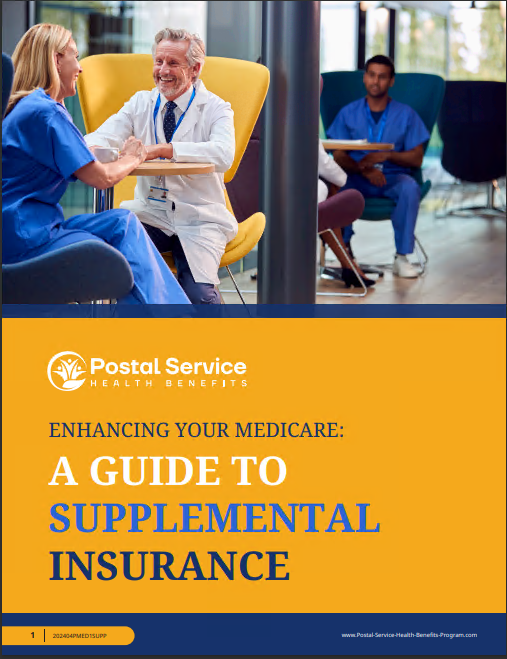Key Takeaways:
- New Medicare and Postal Service Health Benefits (PSHB) rules have created significant changes for USPS retirees in 2024.
- USPS retirees and employees must understand the updated healthcare options to avoid potential coverage gaps.
The Confusing New Rules on Medicare and USPS Health Benefits—Here’s the Breakdown
The year 2024 has brought several changes that impact U.S. Postal Service (USPS) employees and retirees, particularly with the introduction of the Postal Service Health Benefits (PSHB) program. Coupled with recent updates to Medicare, these new regulations are creating confusion about how health coverage will work moving forward. Whether you’re nearing retirement or already retired, it’s crucial to understand how these programs intersect, what choices need to be made, and the potential consequences of those decisions. This guide offers a clear breakdown of the key elements of these new rules, aiming to ease the complexity for postal workers and retirees alike.
What Is the Postal Service Health Benefits (PSHB) Program?
The Postal Service Health Benefits (PSHB) program is a new health plan structure mandated by the Postal Service Reform Act of 2022, set to fully launch in 2025. This program will replace the Federal Employees Health Benefits (FEHB) for USPS employees and retirees. The PSHB aims to provide specific health coverage for USPS workers and retirees, separate from the general pool of federal employees. However, one significant requirement is that most postal retirees will need to enroll in Medicare when they become eligible, even if they already have health coverage under PSHB.
This shift has stirred many questions about how coverage will change for retirees and how Medicare fits into the equation. The PSHB will work in conjunction with Medicare, but certain actions need to be taken to ensure continuous coverage.
Medicare Enrollment Now Mandatory for USPS Retirees
One of the biggest changes with the introduction of the PSHB is the mandatory Medicare Part B enrollment for USPS retirees turning 65. Previously, enrolling in Medicare was an option for many federal employees, including postal workers. However, under the new rules, most retirees who are eligible for Medicare will be required to enroll in both Medicare Part A (hospital insurance) and Medicare Part B (medical insurance). Failure to do so may result in a loss of PSHB coverage.
What Are Medicare Parts A and B?
Medicare Part A covers hospital stays, skilled nursing facilities, hospice care, and some home health care services. Most individuals do not pay a premium for Part A if they’ve worked long enough to earn Social Security or Railroad Retirement benefits. On the other hand, Medicare Part B covers physician services, outpatient care, preventive services, and durable medical equipment. Unlike Part A, Part B requires a monthly premium, and its costs can be significant depending on your income level.
Under the new USPS health plan rules, Medicare Part B will now play an integral role in retirees’ health coverage, especially for those enrolled in PSHB.
Key Changes to Expect in 2024
Here are the main changes USPS retirees and employees should be aware of:
Mandatory Medicare Part B Enrollment
As mentioned earlier, one of the most substantial shifts is the compulsory Medicare Part B enrollment for eligible USPS retirees. The intention is for Medicare to serve as the primary payer, with PSHB covering remaining expenses.
For those already enrolled in Medicare, this may not be a significant change. However, retirees who have previously waived Part B or delayed enrollment may need to reassess their situation. The penalties for late enrollment in Medicare can be steep, and this change adds a layer of urgency to the decision-making process.
Coordination of Benefits Between Medicare and PSHB
With Medicare as the primary payer, the PSHB will function as a secondary payer. This means that Medicare will cover most of the retiree’s healthcare costs first, and PSHB will handle costs that Medicare doesn’t cover, such as copays, coinsurance, and services outside Medicare’s scope. This coordination will likely reduce out-of-pocket costs for retirees, but only if they meet the new Medicare enrollment requirements.
Special Enrollment Period for USPS Retirees
A special enrollment period has been created for USPS retirees who were not previously enrolled in Medicare but will now be required to do so. This enrollment period will allow retirees to sign up for Medicare Part B without facing the usual late enrollment penalties. It’s essential for retirees to act during this period to avoid disruptions in coverage.
What Happens If You Don’t Enroll in Medicare?
Retirees who are eligible for Medicare but fail to enroll in Part A and Part B may lose their PSHB coverage. This can lead to significant gaps in healthcare access and an increased financial burden. If you’re a USPS retiree or nearing retirement, it’s critical to review your eligibility and enroll in Medicare to avoid losing your benefits.
Understanding the Postal Service Reform Act and PSHB Rollout
The Postal Service Reform Act of 2022 was created to ensure the long-term financial health of the USPS. One of the key elements of this reform was separating the health benefits of USPS employees and retirees from those of the broader federal workforce. The Postal Service Health Benefits program will now serve as a dedicated system for current and retired postal workers, with an emphasis on integrating Medicare into its structure.
By requiring most retirees to enroll in Medicare, the USPS and the federal government aim to lower overall healthcare costs by shifting a significant portion of the financial responsibility to Medicare. This move is expected to stabilize the PSHB’s financial standing, as Medicare will handle the bulk of retirees’ healthcare expenses.
Navigating the Transition: What Should You Do?
For USPS retirees, navigating these new healthcare changes may feel overwhelming, but understanding the key actions to take will make the process smoother:
-
Confirm Your Medicare Eligibility: If you are approaching 65 or have already passed this milestone, confirm your eligibility for Medicare Parts A and B. For most, Part A is premium-free, but Part B will come with a monthly cost.
-
Enroll in Medicare During the Special Enrollment Period: Don’t wait until the last minute. Take advantage of the special enrollment period to sign up for Medicare Part B without penalty. This period is crucial if you want to avoid disruptions in your PSHB coverage.
-
Review Your PSHB Plan: Understand how your PSHB coverage will coordinate with Medicare. This includes reviewing which services Medicare covers versus what PSHB will pay for, and determining if any changes to your healthcare providers are necessary.
-
Seek Professional Guidance: Don’t hesitate to contact a licensed insurance agent or Medicare counselor for help. These professionals can assist in clarifying your options and ensuring that you’re making the right choices for your healthcare needs.
How These Changes Will Impact Your Healthcare Costs
One of the significant benefits of this transition is the potential for reduced out-of-pocket healthcare costs, particularly for those with chronic health conditions or high medical expenses. Because Medicare will serve as the primary payer, PSHB will likely help cover costs like copays and services not fully covered by Medicare. However, it’s important to note that enrolling in Medicare Part B does come with a premium, so retirees need to factor this into their budget planning.
Why USPS Retirees Should Act Now
Given the substantial changes to the health benefits landscape, it’s crucial for USPS retirees to take immediate action. By enrolling in Medicare and understanding how the PSHB will complement your Medicare coverage, you can avoid penalties, minimize coverage gaps, and make informed decisions about your healthcare. The special enrollment period offers a limited window to get everything in order, so don’t delay in preparing for this transition.
Moving Forward with Confidence
Navigating the new Medicare and PSHB rules may feel challenging, but with the right information and timely action, USPS retirees can ensure they maintain comprehensive healthcare coverage. By enrolling in Medicare, reviewing PSHB options, and seeking expert advice, you can move forward with confidence, knowing that your health needs will be taken care of in the years ahead.
Stay Ahead of the Changes
The sweeping reforms to USPS health benefits require careful attention. USPS retirees should ensure they understand how the PSHB and Medicare will work together to provide healthcare coverage. By staying informed and taking action during the special enrollment period, retirees can protect their healthcare access and avoid unnecessary costs.







